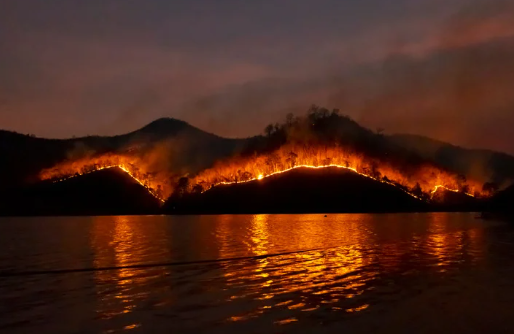Wildfire Erupts in Malibu Canyon: A Closer Look at the August 2024 Incident
On August 7, 2024, an alarming wildfire erupted in the picturesque Malibu Canyon, California. Known for its stunning landscapes and wildlife, Malibu became the center of attention for all the wrong reasons as residents were forced to evacuate due to the fast-moving blaze. The situation escalated swiftly, warranting an immediate response from firefighting teams and local authorities. This article delves into the details surrounding the wildfire, its impact on the community, and the broader implications for wildfire management in Southern California.
The Initial Outbreak and Evacuations
The wildfires in Malibu Canyon ignited rapidly, fueled primarily by the dry brush and erratic wind patterns that typify the region during the summer months. With flames rapidly advancing through the rugged terrain, officials issued mandatory evacuation orders for residents in proximity to the fire. These swift measures were taken to ensure the safety of locals, as the unpredictable nature of wildfires can pose serious risks to life and property. The urgency of the situation highlighted the importance of preparedness in areas vulnerable to wildfires.
Firefighting Response
In response to the wildfire’s rapid spread, a robust firefighting effort was deployed. Firefighters on the ground were supported by aerial resources such as air tankers and helicopters, which played a crucial role in containing the advancing flames. These aircraft conducted water and fire retardant drops, effectively slowing the fire’s progress and protecting structures located within its path. While firefighters contended with challenging conditions, including steep terrain and changing winds, their quick and coordinated response demonstrated the efficiency of emergency management protocols in such crises.
Establishment of Evacuation Centers
As the wildfire prompted mass evacuations, local authorities acted swiftly to set up evacuation centers for displaced residents. This was a critical move to ensure that those who were forced to leave their homes had access to safe shelter and resources. It provided a temporary haven for individuals and families affected by the flames, reinforcing community bonds and support systems during a difficult time. Local organizations and volunteers also rallied to provide essentials such as food, water, and blankets to those in need, showcasing the resilience of the Malibu community.
Status Updates and Investigations
As of the latest updates, no injuries have been reported, offering a glimmer of hope in an otherwise devastating situation. The absence of injury attests to the efficiency of the evacuation orders and the efforts of emergency personnel in managing the crisis. However, the cause of the wildfire remains under investigation. Understanding the origins of such fires is crucial for future prevention efforts, as it informs fire management strategies and community preparedness initiatives.
The Broader Implications for Southern California
This wildfire incident serves as a stark reminder of the ongoing risk of wildfires in Southern California, particularly during the hot and dry months when conditions are optimal for blaze outbreaks. The increasing frequency and intensity of Wildfires in the region is exacerbated by climate change, making it crucial for residents to stay informed. It is essential that they maintain defensible space around their properties and adhere to local fire regulations. Public education on fire safety practices, including evacuation procedures and emergency preparedness kits, remains paramount as well.
Conclusion
The Malibu Canyon wildfire that emerged on August 7, 2024, underscores the perpetual challenges faced by communities in wildfire-prone areas. While the swift actions of firefighters and local authorities mitigated potential disaster, the incident serves as a reminder for residents to remain vigilant and prepared for future fire threats. By fostering a culture of awareness and adherence to fire safety protocol, communities can enhance their resilience against such natural disasters. Looking forward, it is imperative for stakeholders at all levels to invest in sustainable fire management and emergency response strategies to safeguard local communities against the devastating effects of wildfires.
FAQs
What were the causes of the Malibu Canyon wildfire?
The exact cause of the Malibu Canyon wildfire remains under investigation. However, it occurred during a period of dry conditions and strong winds, which are typical factors contributing to wildfire outbreaks in Southern California.
How can residents prepare for wildfires in their area?
Residents can prepare for wildfires by maintaining defensible space around their properties, adhering to local fire regulations, and staying informed about fire conditions. Creating an emergency plan, including evacuation routes and a communication strategy, is also highly recommended.
What resources are available for evacuees during a wildfire?
Evacuation centers are typically established by local authorities to provide temporary shelter and resources for displaced residents. These centers offer essential supplies such as food, water, and bedding, and often connect evacuees with local organizations that can aid in recovery efforts.
Has there been any reported damage to properties from the Malibu fire?
As of the latest reports, there have been no injuries or significant damage to properties mentioned. The effective response of emergency personnel helped to protect structures in the affected areas.

